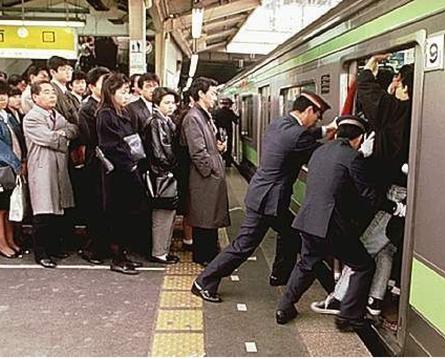

Readers of my previous columns in New Transit magazine will be aware that I have been developing a discussion about the different business models that passenger transport providers can chose to pursue, and the issues they face in the particular business, political and regulatory environments in which they operate.
I was aware that I was walking in a something of a minefield, and facing a real danger of just talking theory and concepts, rather than practicalities. So this time I’m going to confront that point, and address a specific issue head on. Yield management; it’s not new as a concept, but it interacts with today’s policy, technology and society in creative new ways for those offering services to a multiplicity of customers.
With this in mind, we set up one of the sessions at our Travel 2020 conference this year with some industry experts on the subject. While these observations aren’t directly linked to that session, I am grateful to John Fuggles, Ian Leonard and Kevin Tucker for lifting up the stone and teaching me a bit more about what goes on underneath it in this field, mostly in the air sector, but increasingly on surface transport too.
The premise is straightforward, and it is this: the business effectiveness of a transport operator will be optimised if it can extract the maximum possible amount that each customer is willing to pay. If that sounds uncomfortable to public sector ears, there is a more redistributive way of putting it: customers who are willing and able to pay should be charged as much as possible, so that the less well-off can be subsidised and offered more affordable rates.
This isn’t just a philosophy. It’s a matter of simple mathematics (OK then, actually quite complicated econometrics) that this approach will maximise the number of people travelling on a service for any given level of profit. If you think that profitability in a competitive marketplace tends towards an equilibrium level across the suppliers – and there is considerable evidence that it will – that means maximising ridership. This approach will also, obviously, maximise the amount of profit from any given level of patronage.
That is where the yield management industry comes in. There is now a set of tools that can be deployed to help make this process, and its desired outcomes, a reality. The political and regulatory environment still needs to be conducive, of course (and I’ll come back to that), but once this is in place, the number crunching can begin.
There are a number of steps in this. The first step is to understand your customer base better. Who are they, and why are they travelling? What are their options? What do they feel about their travel expenditure, or their travel experience?
You might think that you could get more money from those people who don’t have a choice, but that may not neccessarily be true. People with a choice may be more affluent, and be able to afford more, and therefore worry less about a marginal cost increase. With some payment types, like smartcards, they might not even notice price changes or variations as long as the overall deal represents what the customer perceives as “value for money”. Don’t the phone companies know this!
The next step is to open a communication channel with your customer. It doesn’t have to be one-on-one, so long as it addresses them by shared desires, or market segment. For instance you could put up posters in colleges, saying “register on our website for special offers or a student discount”. You can then use the registration database – sorted carefully – to issue targeted marketing messages. There is plenty of opportunity for tie-ins and cross-marketing with destinations once you understand what your customers are doing. Extra discounts at the café for those going to the concert! Cut price travel home from the cinema!
If you are in a sector where capacity is sometimes a problem, there is another lever that can be pulled. You want people to travel, but only when you are actually able to give them a good service. So you need to know, specifically, what makes people travel at times of peak loading, and what you can do to move them to other services. Sir Roy McNulty’s report “Value for Money in GB Rail” refers to purely price incentives as “shoulder pricing”, although adjusting other customer benefits can also incentivise people to travel off-peak.
Managing the relationship between forecast demand and capacity supply has, of course, a long and complex history in transport. “Predict and provide” was once a guiding principle, but hard economics and resource availability constraints have increasingly made this not always possible.
The obvious link between demand forecasting and the level of pricing gets both to the heart of yield management and capacity planning, because there is now a three-way calculation to be done. Price (or proposition more generally) drives custom; capacity may constrain it; And it costs resources to expand. The output of the best combination yields profit. You can see how this quickly becomes a game of numbers, and the better the data should mean better decisions. The current explosion of data about all manner of customer behaviours offers new opportunities to tweak the equations.
My reference to the ‘customer proposition’ perhaps needs comment. Customers may respond in a more elastic way to “improved experience” than to perhaps straightforward ticket price incentives. Indeed, we live in a time where the experience is often as important as the price. Sometimes even the “perception of the experience”! Branding, co-marketing, one-off deals, loyalty points, membership schemes, or simply customers being contacted, may be more effective in driving demand than simply bringing the scheduled price down.
Dealing with customers in this way is increasingly claimed to have some significant benefits; several percentage points of increase in revenue being typical, without too much hard work, and double digit increases possible if you try a bit harder. Stagecoach is winning a reputation in bus circles for getting this right, as has Virgin in air travel. This is serious business, and really does get the finance directors talking to the marketing directors.
The freedom to play with the price, the customer offer and the marketing is attractive, but the impact of regulation can be significant.
Let’s suppose you run a network whose peak services are crowded. Not unusual – it can be almost a definition of peak services! The simple response would be to put prices up until the demand load just fills the vehicles. You may actually be able to increase prices a bit more, depending on how fast the load falls off after that point. Hey presto, yield is managed, more money coming in.
But if the regulator tells you that you can’t do this, some of the curve becomes off limits. First and foremost, of course, such external constraints prevent an operator optimising his economics. By failing to charge what the market will bear in one place, he becomes less able to invest in the positive elements of his business or to support marginal customers elsewhere. But there is a subtler impact too: non-pricing measures become almost wholly unviable in this environment.
Giving customers a great experience will usually have some cost impact, whether by requiring better management systems, more or better front-line staff, improved on-board services, or simply training and rewarding employees better. Why would you do this? To get more customers. Why would you do this if your service is full to capacity? To get more income. And how would you do this if fares are capped?
It’s relatively easy for a bus operator to buy or lease a few more vehicles to put on the road and thereby to increase route capacity. It is not at all easy for a train operator to do the same. In many places the constraint is one of track access. It’s also true that the air industry also suffers from serious shortages of infrastructure (airport slots, air traffic corridors), but they don’t have regulated prices. So we have the curious spectacle in which both regular and low cost airlines are falling over each other to offer special deals to their customers, and off-peak leisure travellers getting TLC from the train operators, while highest priced commuters are jammed in like sardines and feel ignored, or even resented.
They may suspect the hard reality: Ladies and Gentlemen: you aren’t being ignored; you are being disincentivised to travel at peak times through a non-pricing mechanism! If we can’t price you off the trains we can push you off them! It’s still yield management, but not quite as other businesses know it.
TransportXtra is part of Landor LINKS
© 2026 TransportXtra | Landor LINKS Ltd | All Rights Reserved
Subscriptions, Magazines & Online Access Enquires
[Frequently Asked Questions]
Email: subs.ltt@landor.co.uk | Tel: +44 (0) 20 7091 7959
Shop & Accounts Enquires
Email: accounts@landor.co.uk | Tel: +44 (0) 20 7091 7855
Advertising Sales & Recruitment Enquires
Email: daniel@landor.co.uk | Tel: +44 (0) 20 7091 7861
Events & Conference Enquires
Email: conferences@landor.co.uk | Tel: +44 (0) 20 7091 7865
Press Releases & Editorial Enquires
Email: info@transportxtra.com | Tel: +44 (0) 20 7091 7875
Privacy Policy | Terms and Conditions | Advertise
Web design london by Brainiac Media 2020